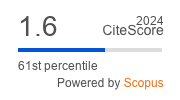Malaysian Journal of Mathematical Sciences, September 2023, Vol. 17, No. 3
Soret-Dufour Effects on The Waterbased Hybrid Nanofluid Flow with Nanoparticles of Alumina and Copper
Isa, S. S. P. M., Parvin, S., Arifin, N. M., Ali, F. M., and Ahmad, K.
Corresponding Email: ctsuzilliana@upm.edu.my
Received date: 20 September 2022
Accepted date: 11 May 2023
Abstract:
The two-dimensional mathematical model of water-based hybrid nanofluid, where the nanoparticles of the model are alumina ($Al_2O_3$) and copper (Cu) is analyzed in this article. It describes the heat and mass transfer which are induced by concentration and temperature differences, respectively. The current mathematical model extended the works by implementing both directions of moving sheet in the boundary conditions: stretching and shrinking, and use the exponential variations of the sheet velocity, temperature, and concentration of the hybrid nanofluid at the sheet. The final numerical solutions can be obtained by implementing Matlab bvp4c, which involves the step of choosing the most reliable solution in an actual fluid situation. This selection technique on numerical solutions is known as stability analysis and only needs to apply when more than one numerical solution appears in the Matlab bvp4c program. Finally, the controlling parameters such as nanoparticle solid volume fraction, suction, shrinking/stretching, Soret and Dufour cause an increment or decrement in the flow, heat and mass transfer in the hybrid nanofluid. For the stable solution, fluid velocity becomes slower whereas temperature and concentration of the fluid increase when the percentage of Cu, as well as $Al_2O_3$, rises into the water. Moreover, in case of local Nusselt number and local Sherwood number it is proved that Soret effect is the opposite phenomenon of Dufour effect.
Keywords: hybrid nanofluid; alumina, copper; Soret and Dufour effects; viscous dissipation; Matlab bvp4c; stability analysis









